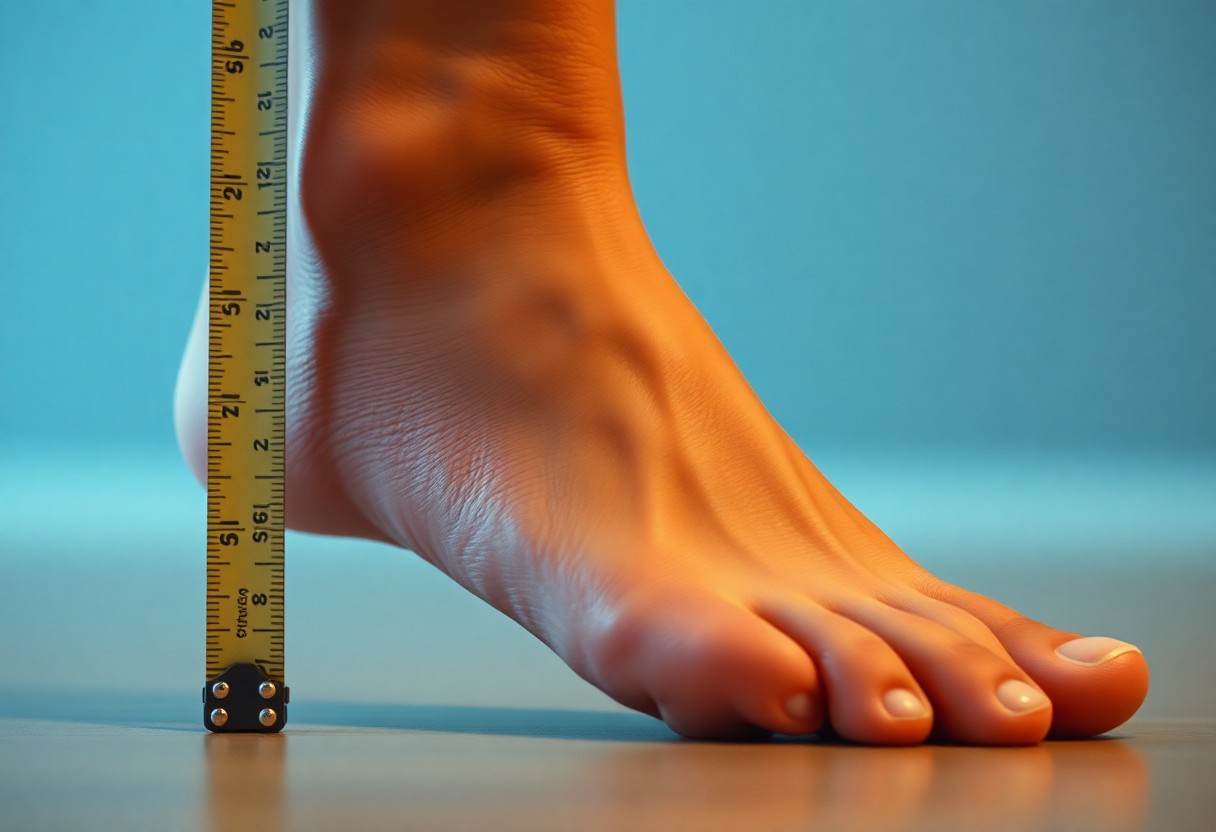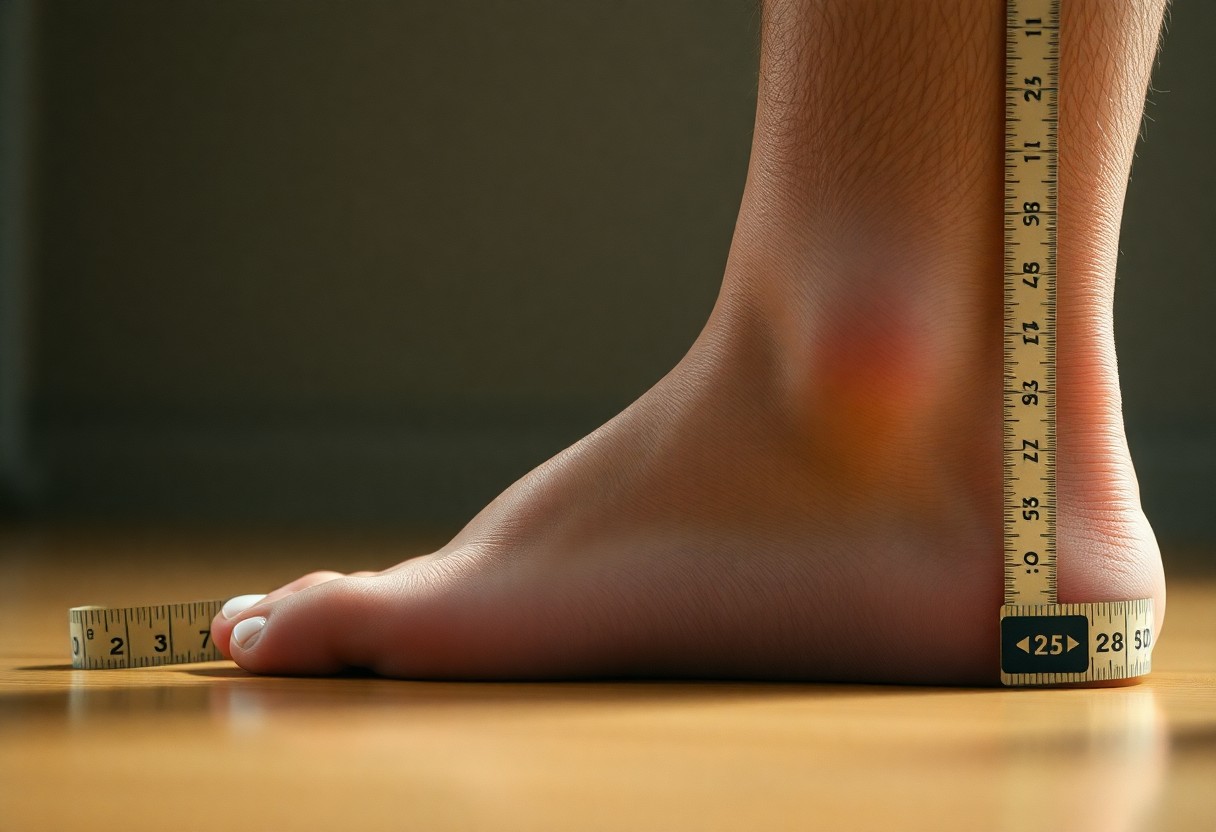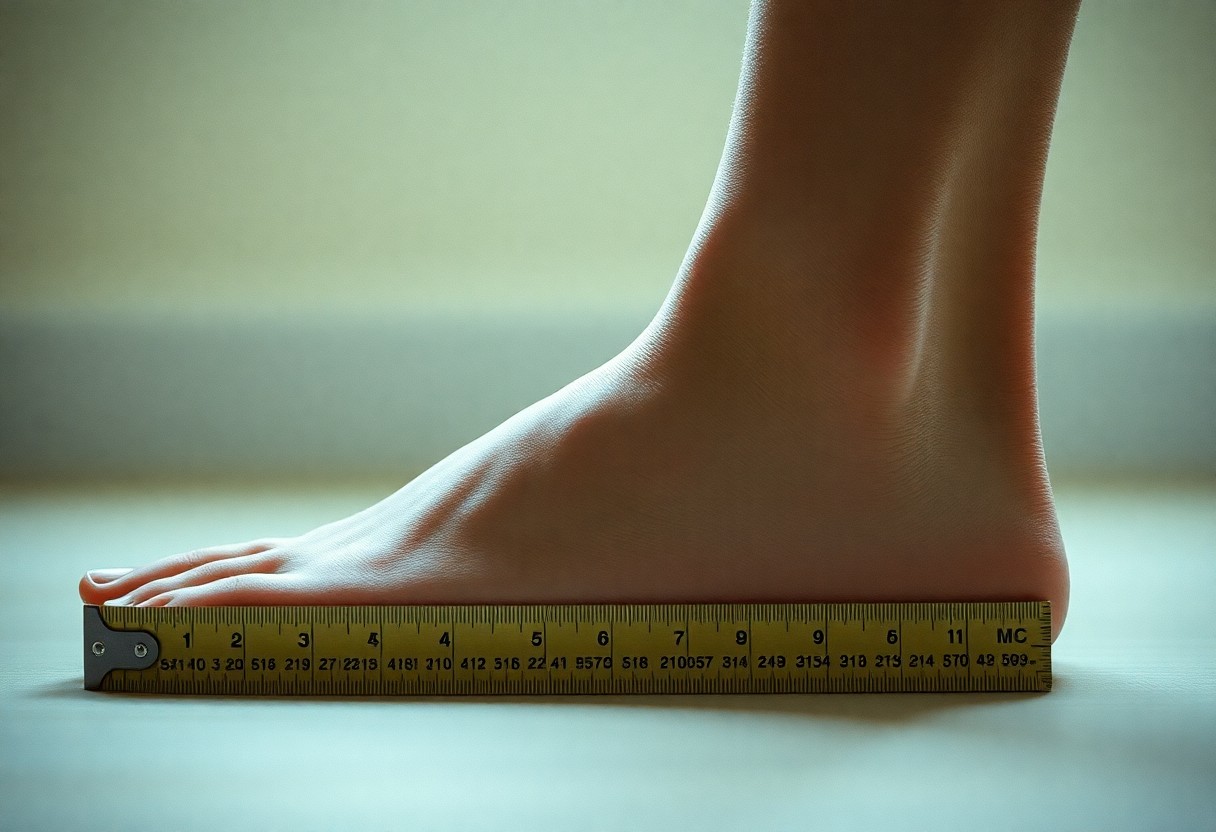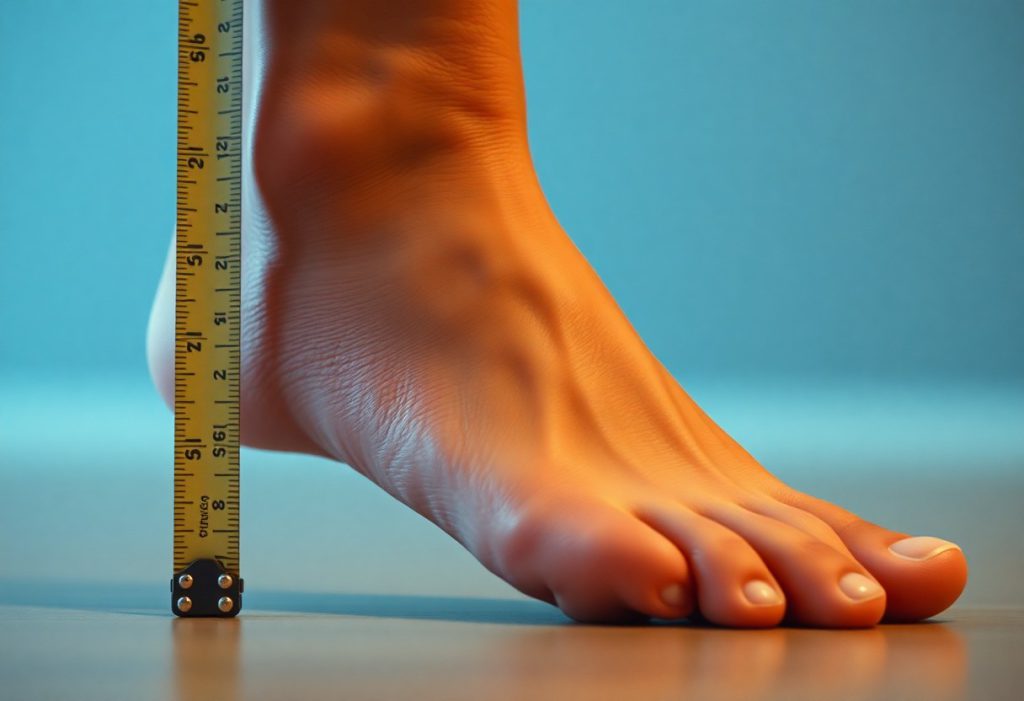Persistent foot discomfort and challenges in finding properly fitting shoes are widespread issues affecting countless individuals. Understanding your foot width is essential for achieving optimal foot health. Symptoms may include frequent pressure points on the sides of your feet, shoes that feel uncomfortably tight even when the length is correct, or recurring blisters along the edges of your feet. It is vital to wear well-fitting shoes, and identifying your foot width is the first crucial step toward comfort. This comprehensive guide aims to help you determine if you have wide feet through simple at-home methods, empowering you to make informed shoe choices and avoid potential foot complications.
Gain Insights into Wide Feet and Their Impact on Comfort
For many people, having wide feet is simply a natural variation in foot anatomy. Factors such as bone structure, muscle composition, or tissue distribution can lead to a wider foot profile. By gaining a deeper understanding of this condition, you can make better footwear choices and maintain proper foot health. Wide feet can influence your overall mobility, comfort levels, and even your posture, highlighting the importance of choosing shoes specifically designed for your unique foot shape.
Exploring Genetic Influences on Your Foot Width
Your genetic background significantly impacts your foot width. You inherit various foot traits such as bone structure and arch height from your parents. Research shows that approximately 60% of the variations in foot width can be traced back to genetic factors. This hereditary influence determines both the size and shape of your feet from birth, making it essential to recognize these traits when choosing appropriate footwear.
Understanding How Lifestyle Choices Affect Foot Width
Contrary to common belief, your daily lifestyle choices and habits can have a significant impact on your foot width over time. Key contributing factors include:
- Prolonged standing
- Weight fluctuations
- Inappropriate footwear
- Physical activities
Any of these influences can lead to gradual foot widening, so it's essential to consider your daily activities and lifestyle when assessing your foot health.
A combination of everyday activities and lifestyle factors can profoundly affect your foot width. Consider these additional influences:
- High-impact physical exercises
- Pregnancy
- Aging
- Medical conditions
Each of these elements requires special attention to foot care and the selection of suitable footwear to ensure comfort and support for your specific foot shape.

Discover Effective Techniques to Measure Your Foot Width
You can accurately assess your foot width through two primary approaches: professional assessments and simple at-home techniques. Obtaining precise measurements is crucial for finding comfortable shoes that help prevent foot-related issues. It is essential to measure your foot width at its widest point, typically across the ball of your foot, to ensure you achieve the best fit.
Utilizing Professional Shoe Fitting Assessments
Professional shoe fitting experts use specialized tools like the Brannock Device, which provides precise measurements of both length and width. This professional measurement ensures accuracy and can identify specific foot characteristics that influence how shoes fit. Your foot width is then compared against standardized sizing charts from various shoe manufacturers to guarantee the best fit for your unique feet.
Implementing Simple At-Home Foot Measurement Techniques
The best time to measure your feet is around midday when they naturally expand due to daily activities. To begin, gather a sheet of paper, a pencil, and a measuring tape or ruler. Stand on the paper to capture the most accurate measurements of your feet.
For at-home measurements, follow these steps: trace your foot's outline while standing, measure the widest part of your foot, and compare your findings to standard size charts. Be sure to measure both feet, as it is common for one foot to be slightly larger than the other. To improve accuracy, measure across the ball of your foot and subtract 1/8 inch from the final measurement.

Recognizing Key Indicators of Wide Feet
Identifying whether you have wide feet can often be accomplished by recognizing various clear signs. Pay close attention to specific physical markers and daily comfort issues. Studies indicate that approximately 30% of individuals wear the wrong shoe width, often unaware that they have wide feet. Your foot width is directly linked to your overall foot health and comfort during everyday activities, making it essential to identify and address any discrepancies.
Understanding the Physical Characteristics of Wide Feet
To determine if you have wide feet, closely examine the appearance and behavior of your feet. Look for visible signs such as foot spillage over the sides of your shoes, indentations on your feet caused by tight footwear, and a splayed foot shape when standing. Ensure that your toes have ample room to move freely, and that the ball of your foot fits comfortably without creating pressure points.
Identifying Everyday Discomfort Indicators
Common discomfort indicators include frequent blisters on the sides of your feet, numbness in your toes, and persistent discomfort when wearing shoes. You may notice that your shoes stretch sideways over time or find relief when you take them off. These symptoms often indicate that your footwear is too narrow for your foot width.
Recognizing these discomfort signals empowers you to make better-informed shoe selections. Ignoring these signs can lead to long-term foot complications, such as bunions and corns. Your shoes should provide adequate width from heel to toe, with approximately a thumb's width of space between your longest toe and the shoe's tip. If you consistently feel pressure on the sides of your feet, consider seeking professional measurement for accuracy.
Utilize a Comprehensive Width Chart for Shoe Fitting
Not all feet are the same, and your foot width is just as crucial as its length when searching for the right shoes. A width chart can assist you in matching your foot measurements with the appropriate shoe width, which typically ranges from AA (narrow) to EE (extra wide). Understanding these measurements can greatly enhance your overall shoe comfort.
Grasping Standard Foot Measurements
For accurate foot measurements, ensure you are standing, as your feet naturally spread under your body weight. Measure your foot width at the widest part of your foot, usually across the ball. For women, a standard width (B) ranges from 3.4 to 3.6 inches, while for men, a standard width (D) typically falls between 3.8 to 4.0 inches.
Exploring Variations in Shoe Width Sizes
Width size variations can differ by up to 1/4 inch between letter categories (A, B, D, E). Your feet may require different widths based on their unique shapes, and it is not uncommon to have one foot slightly wider than the other. Always prioritize fitting shoes to your wider foot to ensure optimal comfort.
Considering the natural fluctuations in foot size throughout the day, it is advisable to measure your feet in the afternoon or evening when they are at their largest. Your foot width can also shift due to factors such as weight changes, pregnancy, or aging, making regular measurements essential for appropriate shoe fitting.
Reflecting on Your Past Shoe-Fitting Experiences
Your previous shoe-fitting experiences can provide valuable insights into your foot width. If you frequently experience discomfort at the sides of your shoes or find that you need to size up just to gain extra width, these signs are significant indicators. Many individuals with wide feet report needing to purchase shoes 1-2 sizes larger than their actual foot length solely to accommodate their width requirements.
Assessing Your Current Footwear for Width Compatibility
Above all, it’s essential to evaluate your current shoes for their width compatibility. Stand on a piece of paper and trace the outline of your foot. If your foot spills over the sole of your shoe when compared to this tracing, it is likely that you have wide feet. This simple test can help prevent future foot complications and guide you towards more suitable shoe options.
Identifying Pressure Points in Your Footwear
Approximately 72% of individuals wear incorrectly sized shoes, which often leads to uncomfortable pressure points. You can identify these points by examining areas where your current shoes show excessive wear patterns or where redness appears on your feet after prolonged wear.
It is crucial to recognize that pressure points can lead to long-term foot complications if not addressed. Regularly monitoring areas where your shoes feel tight, especially across the ball of your foot and the sides, can help prevent painful conditions such as bunions and corns. Quick relief from pressure indicates that your shoes may be too narrow, suggesting it’s time to explore wide-width options.

Timing Your Foot Measurements for Maximum Accuracy
Accurate foot measurements should be taken at specific times during the day for reliable results. Your feet naturally change size throughout the day due to physical activity and fluid retention. Taking measurements at consistent times will ensure you obtain trustworthy shoe sizing data.
Morning Measurements for Establishing Baseline Width
To establish your baseline foot width, measure your feet first thing in the morning. After a night of rest, your feet are typically at their smallest size, providing a measurement that reflects the minimum width you need for comfortable footwear.
Evening Measurements for Ensuring Optimal Fit
Before purchasing shoes, measure your feet in the evening when they are likely to be at their largest size. Your feet can expand by up to 8% throughout the day due to walking and standing, which is essential to consider for ensuring a comfortable fit.
It’s also crucial to note that your evening measurements may be up to half a size larger than your morning measurements. This size discrepancy highlights the importance of selecting shoes based on your evening foot measurements to prevent discomfort and potential foot health concerns.
Essential Takeaways for Understanding Your Foot Width
Determining whether you have wide feet involves straightforward steps that you can undertake at home or with professional assistance. Your foot measurements, comfort levels in shoes, and visible signs such as bulging sides can provide valuable insights into whether you need wide-width footwear. Measure your feet with a ruler, watch for red marks after wearing shoes, or consult a shoe store for professional sizing. By understanding your foot width, you can select shoes that fit better, preventing discomfort and potential foot issues. Making informed decisions about your footwear based on these indicators will help ensure that your feet remain healthy and comfortable.
Get Answers to Your Questions About Foot Width
Q: How can I accurately measure my foot width at home?
A: Start by placing a blank piece of paper on a flat surface, step onto it with your bare foot, and trace the outline. Measure the widest part of the outline with a ruler. Perform this measurement for both feet in the evening when they are at their largest. A width exceeding 4 inches for men or 3.5 inches for women generally indicates wide feet.
Q: What physical signs suggest that I might have wide feet?
A: Look for clear indicators: your toes feel cramped in regular-width shoes, you notice red marks on the sides of your feet after wearing shoes, your shoes stretch sideways over time, or you experience pressure on the sides of your feet. All these symptoms indicate that your shoes are too narrow for your foot width.
Q: Is the wet foot test a reliable method for checking for wide feet?
A: Yes, you can use the wet foot test. Wet your bare foot and step onto a brown paper bag or dark surface. If your footprint reveals a broad middle section that occupies most of the print's width, you likely have wide feet. Compare your footprint width with standard size charts available online or in shoe stores to confirm your foot width classification.
The Article How to Determine If You Have Wide Feet: Simple Methods and Signs to Check appeared first on My Shoes Finder
The Article Wide Feet: Simple Methods and Signs to Check Your Size Was Found On https://limitsofstrategy.com



This is such an important topic, and I really appreciate how you’ve laid out the issues surrounding foot discomfort and the importance of understanding foot width. It resonates with me personally because I’ve experienced the frustration of trying to find shoes that fit comfortably. For years, I simply accepted that I had ‘problem feet’ without considering that the actual shape of my feet might be a major factor in the discomfort I faced.
It’s really interesting that you bring up the idea of ‘problem feet’ because so many people have been conditioned to believe that finding the right pair of shoes should come down to size alone. But, as you’ve experienced, it’s often about more than just the number on the box. Foot shape plays a huge role in how comfortable we can feel throughout the day, and it’s so easy to overlook that dimension.
It’s interesting to hear that you’ve faced similar challenges with finding comfortable shoes. Many people overlook the fact that foot shape plays a significant role in comfort. It’s easy to feel like there’s something inherently wrong with our feet when the problem often lies in the fit of the shoes we choose.
This is such an important topic, and I appreciate how you’ve illuminated the often-overlooked issues of foot discomfort and fitting shoes. I think many of us take for granted how significantly foot health impacts our overall well-being. When I first started running, I faced persistent discomfort until I finally measured my feet and realized I needed a wider fit. It was like a revelation!
You’ve hit the nail on the head regarding foot health and its ripple effects on overall well-being! It’s so easy to overlook our feet until they start speaking up—often in the loudest ways possible. Your experience with finding the right fit is a common story. Many runners don’t realize how crucial it is to have shoes that match the unique shape of their feet.
I really appreciate you sharing your experience. It’s eye-opening how often we overlook the importance of getting our shoe fit right, especially when it comes to something as foundational as running. You hit on a key point with the width of the shoe. A lot of people just default to their usual size without considering that foot shape can really vary.
Your insights on the importance of understanding foot width resonate deeply with many of us who have navigated the often complex realm of shoe shopping. Personal experiences can really highlight the struggle with finding shoes that accommodate not just the length, but also the width of our feet. In my case, I’ve learned the hard way that ignoring foot width can lead to long-term discomfort, not to mention those pesky blisters you mentioned.